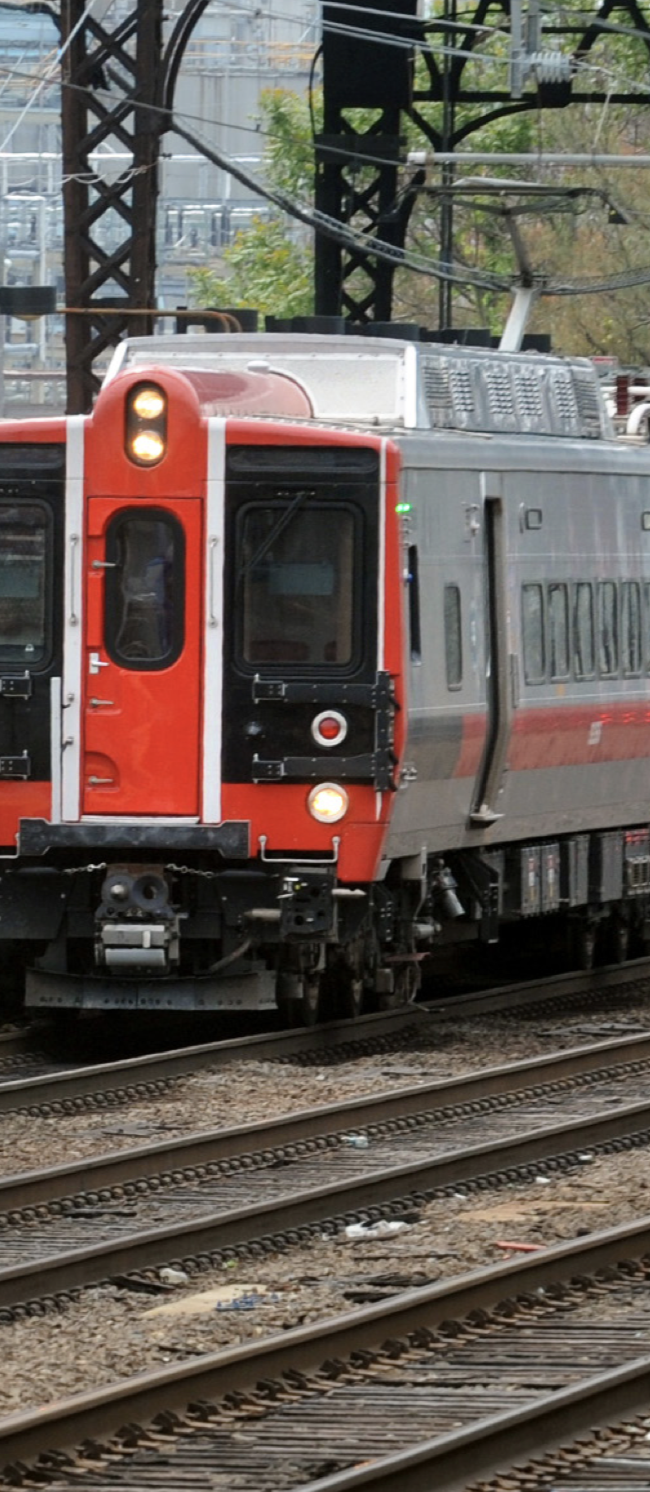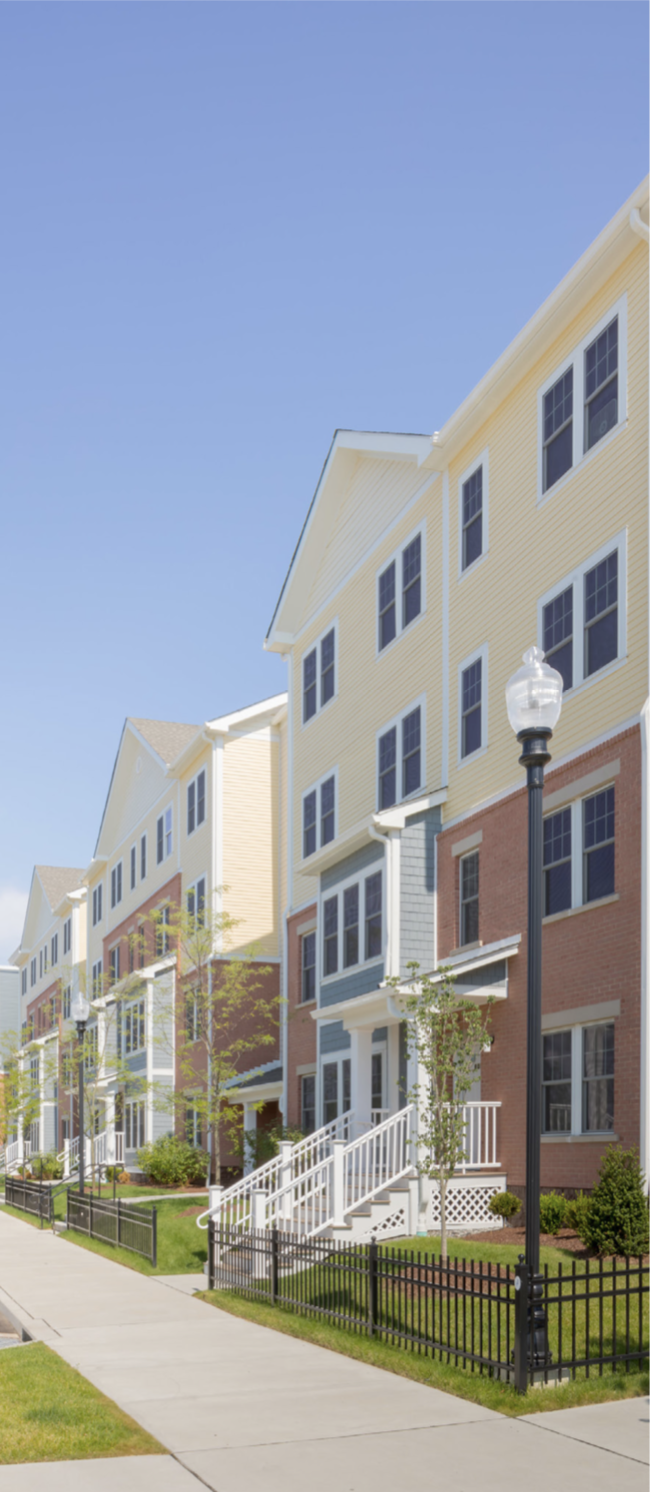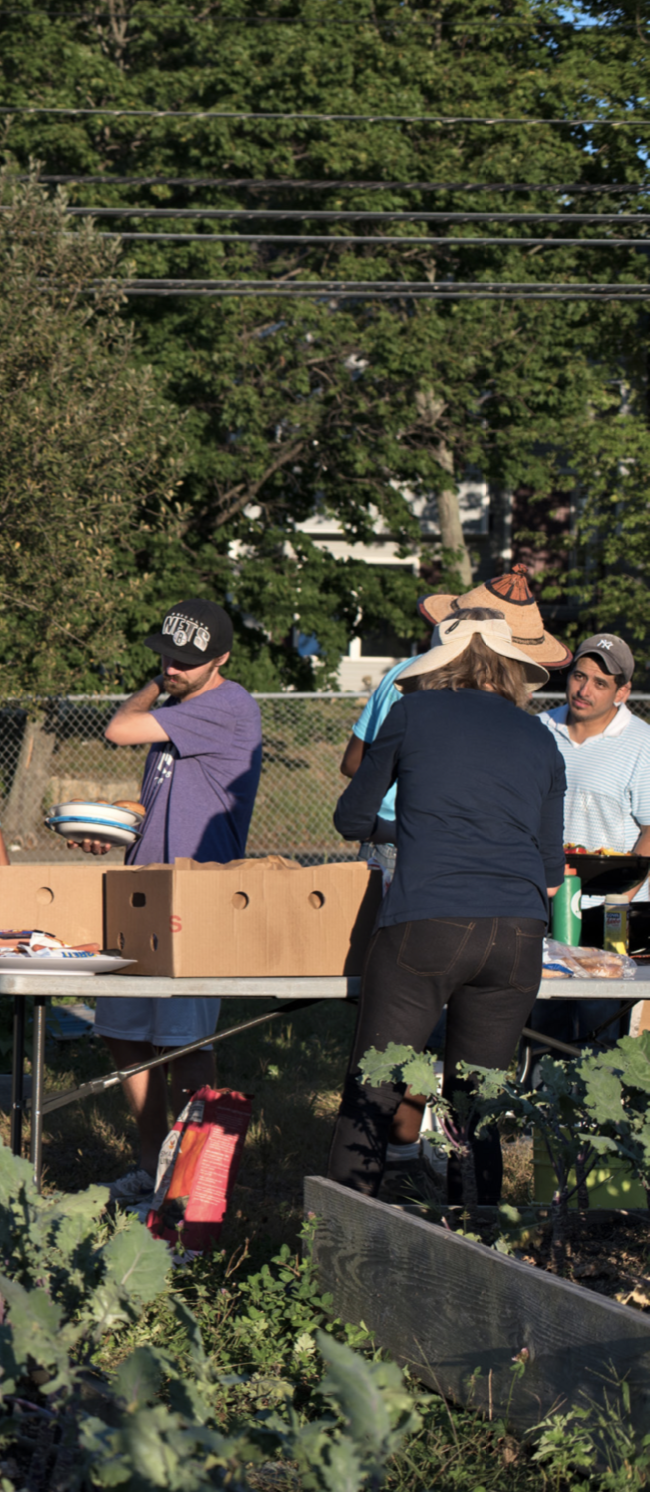

In addition to the Plan’s guiding principles, a number of themes emerged as priorities during the planning process. Many of the Plan’s goals and strategies are aligned with one or more of these priority themes, which can be found in the implementation plan. These four main themes include Bridgeport’s waterfront, transit-oriented development (TOD), housing, and the city’s neighborhoods.
Strategies in the Plan document that are aligned with these themes are noted by a colored bullet point adjacent to the strategy as follows:
The City is committed to the following objectives in support of the city’s waterfront:
Waterfront property is synonymous with high value land. Most coastal cities have a combination of key parks and higher end residential or office properties along the water, while a handful of cities also maintain valuable shipping ports as part of their waterfront. Bridgeport once prioritized the waterfront for world renowned industries. Today, aside from the residences in Black Rock, a handful of marinas and a small number of factories, waterfront property in Bridgeport is some of the most underutilized and economically unproductive property in the city.
Due to the inherent value of waterfront property, the current state of underuse also means that the waterfront presents the most exciting opportunity for repositioning and redevelopment in the city. Over the next ten years, the City of Bridgeport should commit to realizing the potential of its waterfront by reclaiming underutilized properties, cleaning any remaining pollution, preparing for the risks caused by coastal flooding and redeveloping these sites to be the high value, publicly beneficial properties that they must be.
Through the Waterfront Master Plan of 2017, the City has already identified what properties are underutilized and has laid out a vision for how they should be redeveloped. It should work with property owners to acquire or assist in the redevelopment of these sites. The Waterfront Plan also identified Opportunity Sites - prime locations for large scale transformation into mixed use developments that preserve public access along the water – which should be prioritized for redevelopment.
The City should continue pursuing the goal of creating a publicly accessible pathway along as much of the waterfront as is possible. This would connect waterfront properties across the city and create new parkland along the shore.
As Bridgeport works to create more safe routes for bicycles and pedestrians throughout the city, it should focus on achieving a large part of the increase along this new waterfront pathway. At the same time, new parks and facilities for play and relaxation should also be developed along the water, as way points on the pathway and centers of activity that will enhance the value of nearby properties.
Through zoning regulations and permitting requirements, the City should promote the development of clean, neighborhood friendly uses on waterfront land, while requiring industrial users to include open space buffers along the water to reduce water pollution. These requirements should also ensure that this open space serves the purpose of protecting neighborhoods and property from the risk of coastal storms and flooding.
Coastal resilience can be accomplished either by creating barriers, lifting structures above potential flood heights or reintroducing marshes, coastal vegetation and floodable landscapes that can weaken the powerful waves and surge caused by storms. The City should not just mandate, but also support these efforts by seeking grant funding, partnering with developers and dedicating city capital to help finance and guide the waterfront transformation.
 Image Credit: Dean Mack, City of Bridgeport
Image Credit: Dean Mack, City of Bridgeport The City is committed to the following objectives in support of transit oriented development:
One of Bridgeport’s greatest assets is its accessibility through many forms of transit, including interstate and state highways, heavily utilized railways, regional bus facilities, a regional airport and a ferry service connecting to Long Island. The City has invested significant funds over the last two decades, including federal and state funds, to upgrade some of this infrastructure to improve the flow of people and commerce to, from and within the city.
Yet with highway congestion worsening each year and car ownership a difficult expense for many to manage, the increased demand for alternative modes of transportation requires further improvements to transportation infrastructure, with a focus on transit.
Upgraded infrastructure is necessary to ensure a safe increase in the number of people using transit to get around, and the City plans to take advantage of increased capacity by improving access to transit, making it an affordable and convenient alternative to driving for Bridgeporters. This will require both making sure that transit services are being provided where they are most needed and promoting a density of development near transit, so that more people can quickly walk, bike or ride to transit stops and stations.
Large investments are required when upgrading fixed transit like railways, train stations and bridges. The most important of which is the development of a new train station in East Bridgeport that can support express rail service along the Northeast Rail Corridor. The City should commit to exploring creative ways to finance investment in new stations as well as upgraded infrastructure, that can complement or replace state and federal funding. Establishing TIF districts is a strategy that the City should investigate for promoting general development as well as for financing infrastructure investments. Other public private partnership formats that should be pursued could include development rights adjacent to, or as a part of, infrastructure projects.
Establishing TIF districts is a strategy that the City should investigate for promoting general development as well as for financing infrastructure investments. Other public private partnership formats that should be pursued could include development rights adjacent to, or as a part of, infrastructure projects.
Bridgeport will also work with Greater Bridgeport Transit (GBT) to enhance bus service through investments in new shelters as well as service that meets evolving local and regional demands. Enhanced technology can also improve the convenience of bus transit, making neighborhoods along bus lines more attractive.
These longer-trip and larger-scale transit options must be integrated into the city and a Complete Streets approach to transportation planning will greatly increase the bicycle and pedestrian amenities that will connect to the stations and ports. By increasing the amount and connectivity of safe walking and biking routes, and ensuring that they lead to bus stops, train stations and other transportation infrastructure, transit options can become a convenient and often cost saving alternative to personal vehicles
The City should work to rezone the areas around transit to increase the allowable density, making it easier to build housing and jobs that can be easily accessed without the need for a car. It is important that housing near transit be affordable at all income levels, so that the cost savings of transit ridership can be enjoyed by those who need it the most.
 Image Credit: Ned Gerard, CT Post
Image Credit: Ned Gerard, CT Post The City is committed to the following objectives in support of neighborhood development in Bridgeport:
The housing situation is complex in Bridgeport, as there are contradicting policy problems: housing is too expensive for many families to afford, while at the same time, not expensive enough to generate profit for real estate developers. The lack of a profit incentive to build new housing has led to an aging housing stock and overall shortage in housing as demand for housing continues to increase at all price points.
As of 2017, 39% of Bridgeport’s housing stock is at least 70 years old, and only 12% is less than 40 years old. Older housing stock is more likely to have lead and asbestos hazards, more expensive to heat and cool and more prone to require costly repairs. It is also generally less expensive than newer housing to buy, meaning that those with lower incomes tend to live in housing that has an increased risk of causing health problems and is more costly than newer housing to properly maintain.
New housing development is required to update the housing stock, and to relieve the pressure on housing costs, by increasing supply to meet or exceed demand. Yet between 2008 and 2017 only 554 housing units were added to Bridgeport’s housing stock. During the same period, the population grew by nearly 11,000, generating demand for over 4,250 additional housing units. In other words, at least 85% of new housing demand was unmet in Bridgeport. The longer this trend continues, the more housing prices will rise at all price points for all Bridgeport residents.
One way the City should try to incentivize new housing development is by updating the zoning code to allow for more housing to be built. In many neighborhoods, due to changes in the zoning code over time, regulations do not allow for a residential building that is demolished to be replaced by a residential building of the same size and instead, can only be replaced by a smaller building without seeking a special exemption from a land use commission. Another way to increase housing supply is to allow for accessory dwelling units to be built through additional zoning updates.
To reduce administrative costs and time added to development, the City should streamline its permitting and licensing processes, eliminating any redundancies. Another administrative goal should be to make these processes more transparent, so that both the total cost and length of time can be accurately estimated when an application is submitted.
The City should communicate with professionals in the local housing industry, including developers and realtors, to understand current trends and respond in a way that will have an impact on development.
The City should also work with housing advocates and community non-profits to explore the possibility of creating a community land trust, focused on preserving housing units that are reserved for lower income families in perpetuity. At the same time, the city must strive to ensure the safety and quality of all subsidized housing units, so that those with fewer housing options aren’t forced to live in conditions that can put households at risk of exposure to health hazards.
 Image Credit: crescentcrossing.com
Image Credit: crescentcrossing.com The City is committed to the following objectives in support of expanding neighborhood development in Bridgeport:
While the City should continue committing resources to the redevelopment of Downtown, it is anticipated that over the next decade, development in that part of Bridgeport will become more self-sustaining. This will allow for the City to shift focus, increasing efforts to revitalize neighborhood centers and corridors.
Initial revitalization actions should concentrate on improving conditions such as blight, vacant properties, and the lack of, or poor quality of, community resources and amenities like libraries, parks and community centers. It is also important to improve the safety of some neighborhoods, before investment and development can be pursued.
Collaboration with the community is important to engender a shared sense of ownership in the project of revitalization. The City should identify partners to assist in anti-litter, anti-dumping and anti-blight campaigns in targeted neighborhoods. The City should also work with community groups like NRZs and regional non- profits to identify community resources that are most in need of upgrading. Improvement strategies should be developed that involve cost sharing between the City and other entities.
A low-cost way to enhance community access to resources is to activate school facilities outside of the normal hours of use by schoolchildren. The large buildings, libraries, playgrounds and fields that are utilized by schools during the weekdays can be made more accessible for community education programs and recreation, in the mode of community centers and public libraries.
It is essential for neighborhoods to be safe, and to be perceived as safe, before redevelopment can occur. While the above-mentioned efforts should improve some of the environmental factors that can lead to a perception of disorder and insecurity, other efforts should be taken to enhance safety directly. The City should work towards building up community block watch programs by adding additional block watches where they are needed and attempting to reactivate dormant block watch groups. The City should also attempt to create opportunities for public safety personnel to engage with community members so cooperative relationships can be developed and mutual trust enhanced.
Once effective strategies are being implemented to improve quality of life, the City can again shift its focus to attracting investment and development into the neighborhood centers and corridors. Infill development should be a key part of this strategy, as there are many vacant and underutilized lots in some of the City’s neighborhoods. Rezoning to allow dense, mixed use development on these generally small infill lots is important for unlocking investment in new development or renovations, so that improvements can be made without special land use approvals.
The City should also consider assisting communities in the establishment of local Business Improvement Districts – like the DSSD in Downtown - that generate revenue exclusively dedicated to maintenance and aesthetic improvements in their commercial area.
 Image Credit: Donaven Doughty
Image Credit: Donaven Doughty